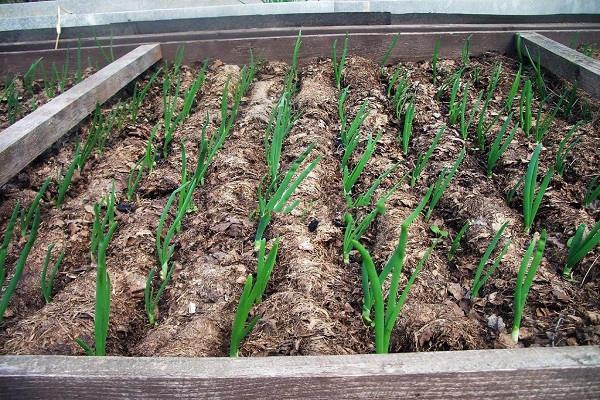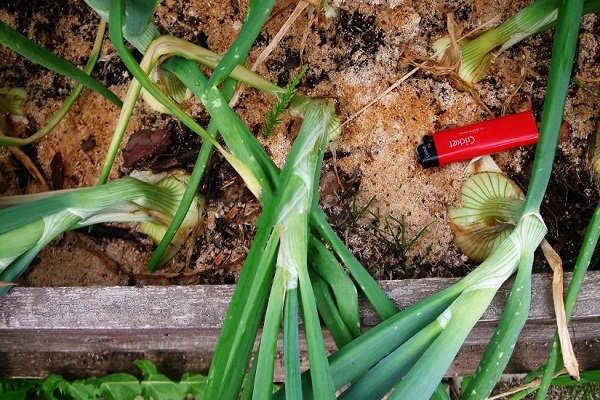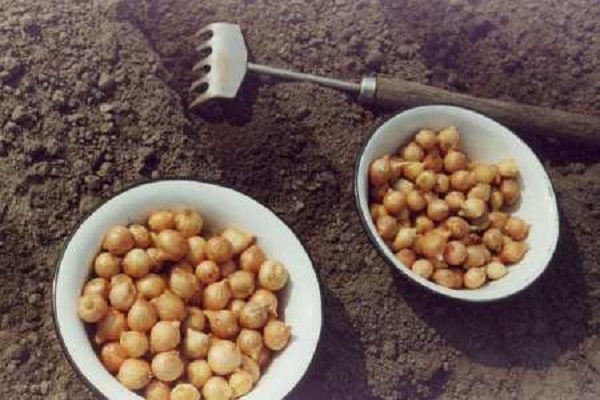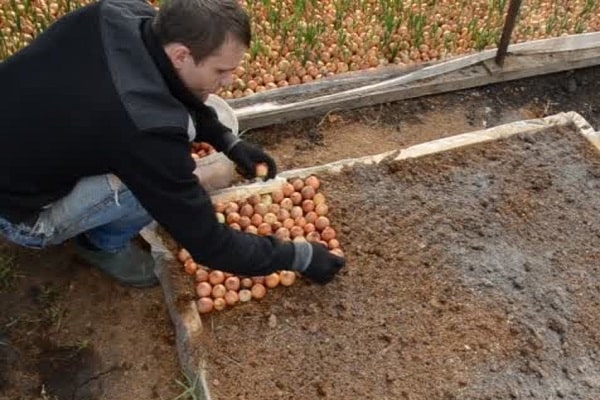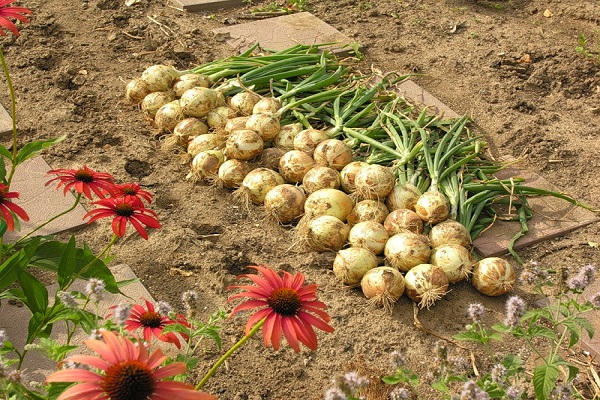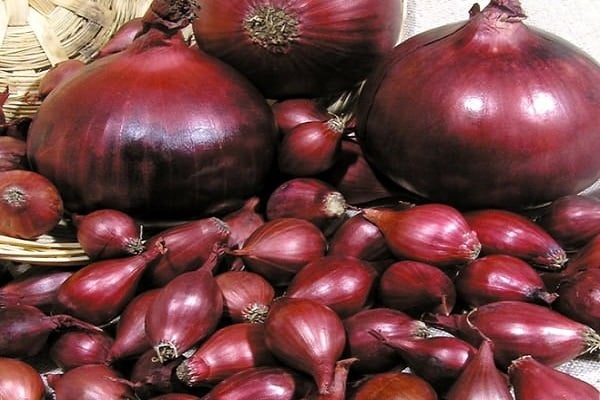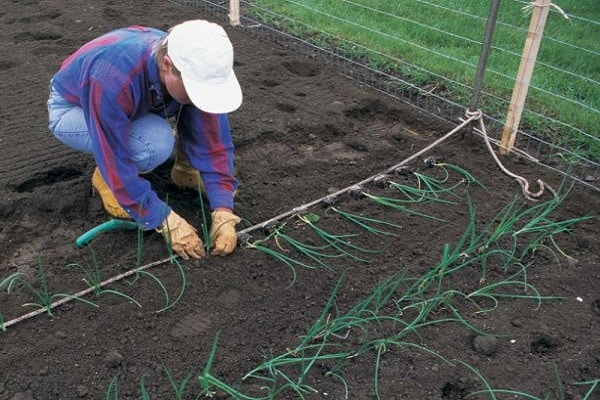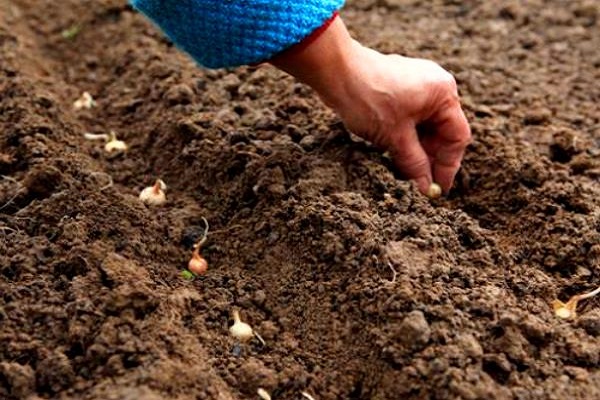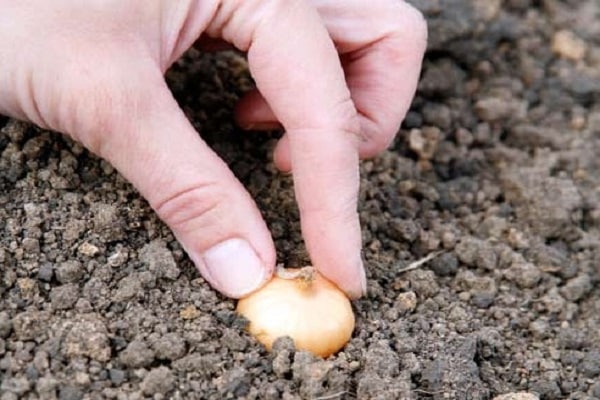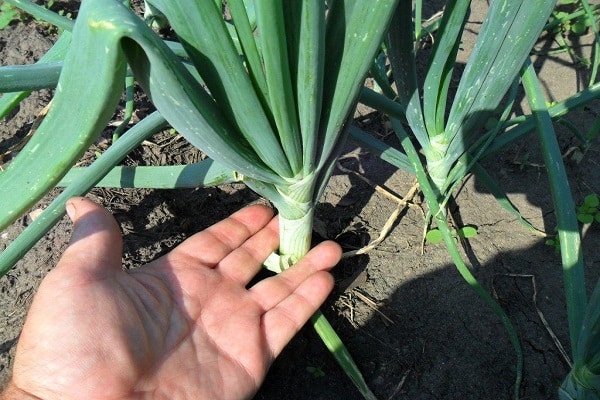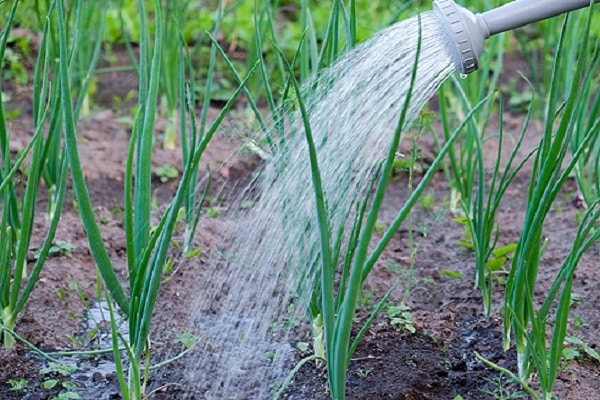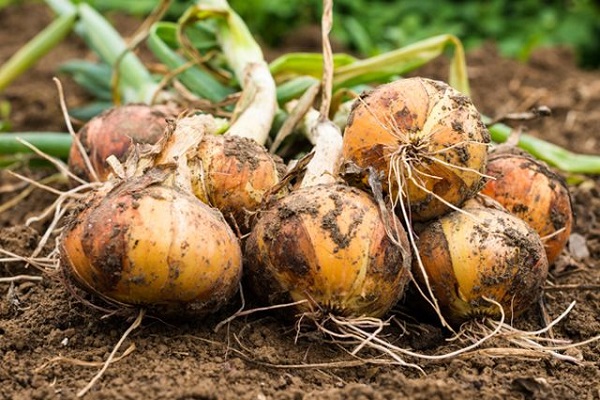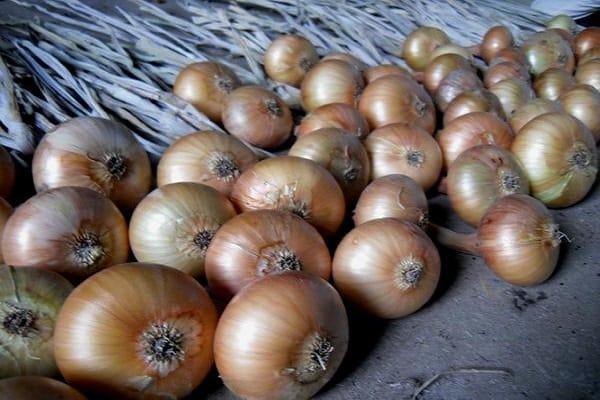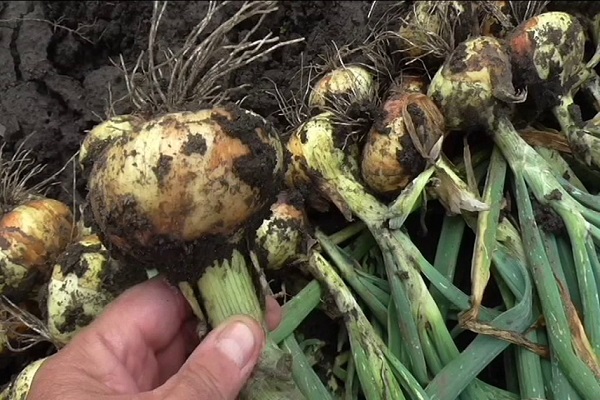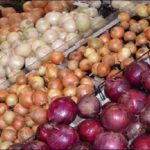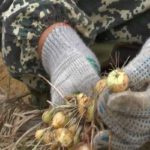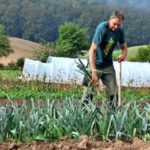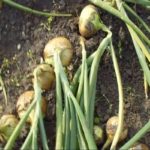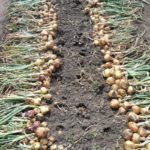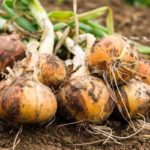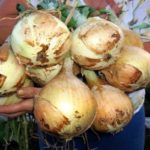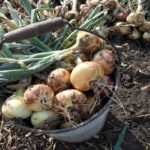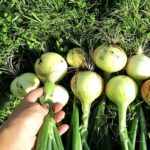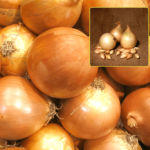When growing onions for turnips, you need to follow a number of agrotechnical techniques and provide special care. In this case, there will be no problems at any stage of plant development, and the harvest will delight you with its quality and quantity. First of all, you need to choose the most suitable method, how to plant onions.
Features of culture
Onions belong to one-, two- and three-year plant species. From the seeds of a vegetable called nigella, onion sets are obtained in the first year. The set is small in size, 2 cm in diameter and weighs about 5 g. Already in the second year, large onions are obtained from the sets. If you plant such an onion in the third year, you can get seeds - nigella.
There are many advantages to growing turnip onions from sets. You can harvest a rich harvest of large heads already 75 days after the appearance of the first shoots. This vegetable does not require frequent watering and thinning. Onions grown from sets are stored well and for a long time.
The main criterion for when to plant onions in open ground is the soil temperature. It is better to wait until the top layer warms up to +12 degrees. If you plant onions in cold soil, many arrows will form, but the turnip will be small and such a crop will not be stored for long.
Planting material must be selected. The bulbs should be smooth, dense, without spots or unpleasant odor. It is better to select the largest heads; subsequently they form little shoots, tolerate cold well and grow quickly.
Planting material is disinfected. For this purpose, the bulbs are kept for some time in a weak solution of potassium permanganate, copper sulfate or table salt.
Soil preparation
For planting and care in open ground, choose a well-lit area where groundwater does not flow. It is better if the soil is loamy. Onions develop well in neutral soil. If the soil is acidic, you should first add wood ash. Two years before sowing the vegetable, you can lim the prepared soil. The best predecessors for onions are cabbage, cucumbers, potatoes, and tomatoes.
In autumn, the land for growing seedlings in open ground is cleared of plant residues and weeds are removed. After this, water the soil so that the remaining weed seedlings emerge again. Then they start digging. The depth of the shovel should be at least 25 cm.
During autumn digging, it is advisable to add humus or compost.It is recommended to add about 5–6 kg of humus for each square meter. If the soil does not have enough nutritional components, then you also need to add urea, superphosphate and potassium fertilizers.
In the spring, before planting the seeds, nitroammophos is added during loosening. Planting onions on a head in open ground begins in the first half of May, when warm weather sets in. The main thing is that the soil warms up and is not lower than + 12 degrees.
Which variety should I choose?
When choosing a variety of spicy vegetable, you need to consider some characteristics.
- According to the ripening period, early (the bulb is formed in approximately 92 days), medium (the development period lasts about 110 days) and late (ripening occurs in 120 days) onion varieties are distinguished. Some bulbs are grown for greens, others are intended for growing turnips.
- The size of the fruit can be from 50 g to 350 g.
- According to their taste, there are spicy, semi-sharp and sweet varieties of the vegetable.
To grow onions for turnips from seeds, choose early varieties with the formation of one bulb, for example, Odintsovets, Red Baron, Strigunovsky, Kaba, Tsitaussky, Shaman, Centaur, Vostorg, Crimson Ball.
Selected seeds begin to be sown in pre-prepared grooves 1.5 cm deep approximately at the end of April. The area should be well lit. After the emergence of seedlings, thinning begins.
Poorly growing onions need to be fed on time. Properly selected fertilizers allow you to harvest a large and abundant harvest, as well as prevent a number of diseases and pest invasions. Vegetables need sufficient quantities of phosphorus, potassium and nitrogen.
Onions most often form many shoots as a result of early planting in poorly warmed soil, improper storage of planting material, or if the size of the head exceeds 3 cm.It is better to cut off the resulting arrows at the very base, otherwise they will not allow juicy and large heads to form.
Is it possible to plant onions on the head in July? It is possible, but only onions grown from sets are used as planting material. Only dense, large bulbs are selected. The only difference in care will be frequent watering of the beds. In this case, the greenery will delight you all autumn. The bulb will only be suitable for consumption immediately after harvesting; it is not stored for storage.
When to plant?
It is very important to choose the right time when to plant onion sets on a head in open ground. Planting begins at a soil temperature of at least +12 degrees. At cold air temperatures and cold soil, the green mass of onions begins to actively develop, while the underground part remains weak and underdeveloped. Many arrows with seeds are formed, which will take all the nutrients and moisture for their ripening.
In central Russia, where the climate is not characterized by consistently warm weather, they begin to plant seedlings in early May. In the southern regions, you can start planting a little earlier, at the end of April. In the northern regions, it is better to leave onion planting until mid-May.
Processing of the site begins in the fall. They dig deep and apply organic and mineral fertilizers. The best soil is considered to be loamy or chernozem.
Landing
For onions in open ground, loose, non-acidified, fertile soil is considered the best. Planting onions on the head in spring is most often done in one line. Furrows 6 cm deep are marked on the land plot, the distance between them should be about 14 cm.The spacing between the bulbs themselves depends on their size. If the heads are large, then the distance should be at least 10 cm. If the heads are small, then 6 cm is enough.
The bulbs should not be pushed too far into the ground. It is enough to deepen it slightly and cover it with a small layer of soil. After planting, the beds are watered and mulched with sawdust or straw.
Already on the 10th day, the first shoots appear. To ensure that oxygen and nutrients are evenly distributed in the soil and penetrate to the roots faster, loosening is necessary. Be sure to carry out weeding to prevent the spread of weeds.
Onion heads for storage begin to be stored only after the final ripening and drying of the harvested crop. Otherwise, the crop will not be stored and will begin to rot.
Care
The first feeding of onions on turnips is carried out 14 days after emergence. If the feather is pale in color, weak and sluggish, then fertilizer can be applied earlier. Typically, root irrigation is used with a solution based on urea or nitroammophoska.
The second feeding is carried out after another three weeks (usually coinciding with the second half of June). During this period, it is important to replenish the soil with potassium and phosphorus reserves. You can prepare a solution of superphosphate and potassium salt.
How to feed onions in Julyso that it grows large and juicy? If the soil is not sufficiently enriched with micronutrients, then a third fertilizing becomes necessary. It is best to apply complex fertilizers. The ideal option is the ready-made complex Agricola 2, Giant, Effecton.
Watering the onion beds should be moderate. In the first weeks after germination, watering once every two weeks is sufficient.If the weather is hot, without rain, then the frequency of watering is increased to once a week. After watering, loosening is necessary to prevent crust formation.
If agrotechnical practices are violated and improper care is taken, the risk of developing diseases increases. Onions are most often affected by a fungal infection (powdery mildew, root rot). Pests may also appear, such as onion flies, moths, and nematodes.
When the length of the feathers reaches 15 cm, it is recommended to prevent pests by treating the beds with copper sulfate. Take 10 g of copper sulfate and 15 ml of liquid soap per bucket of water. You can sprinkle the beds with wood ash or tobacco dust.
Harvesting and storage
It is very important to harvest turnips and feathers at the correct time. There are many ways to determine when onions ripen. Most often they are guided by external signs. The feather begins to turn yellow, dry out, curl, and most of the tops fall to the ground. The neck of the bulb becomes thinner and dries out. The bulb is covered with a golden, rustling husk.
Two weeks before harvesting, stop watering the onion heads and applying fertilizer. This will allow the nutrients to concentrate in the turnip and not in the tops. Some gardeners rake the soil around the bulbs, slightly exposing them. This procedure allows heat and light to penetrate more quickly to the underground part of the plant.
Harvesting is best done in dry, warm weather. It is not recommended to pull out the bow by hand, as you can damage the bottom and tear off the tops. It is better to dig with a fork or shovel. Shake off the adhering dirt from the heads, but do not hit the bulbs against each other.
The harvested crop is laid out on sheets of cardboard or plywood in one layer directly on the beds, allowing it to dry under the rays of the sun. If the weather is rainy, then the onions should be dried in a dry room where fresh air penetrates.
The onion dries completely in about two weeks. After this, they begin to trim the tops, leaving a stump of 5–6 cm. If you plan to braid the tops and hang them, leave a length of about 10 cm.
It is better to store the heads in wooden boxes, cardboard boxes, fabric bags or nets. They need to be sorted out periodically. In the fall, after harvesting, the plot is dug up, all plant residues are removed from the bed and fertilizer is applied.


